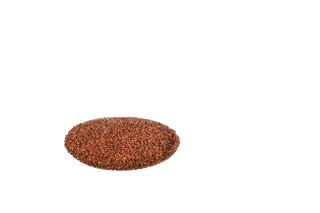

If cooked thoroughly, ragi can be safely included in a dog’s diet. This gluten-free finger millet is a great alternative to wheat and contains prebiotics that promote gut health in dogs.
Ragi is a rich source of potassium and B vitamins that aid in the proper functioning of a dog’s heart and kidneys. Additionally, its high fiber and prebiotic content supports digestive health. Ragi is also suitable for dogs with wheat allergies or gluten intolerance.
It is important to ensure that ragi is cooked thoroughly before feeding it to dogs, as undercooked ragi can cause indigestion issues.
Ragi flour can be used to make dog treats, and it is recommended to feed ragi to dogs in small amounts occasionally. However, it should not make up the majority of a dog’s diet since it is a carbohydrate, and the majority of a dog’s diet should consist of quality meat-based protein.
Ragi, also known as finger millet, is a gluten-free grain that can be safely included in a dog's diet if cooked properly. It is a great alternative to wheat and is commonly used in India and other parts of Asia. Ragi is a rich source of B vitamins and potassium that support heart and kidney function in dogs. Its high fiber and prebiotic content also promote healthy digestion and gut health. Ragi is ideal for dogs with wheat allergies or gluten intolerance. However, undercooked ragi may lead to digestive issues, so it is important to cook it thoroughly before feeding it to your dog. Ragi flour can be used to make dog treats, but it should only be fed in small amounts occasionally as a source of carbohydrates. As always, remember to make sure that the majority of your dog's diet consists of quality meat-based protein. Have you ever tried feeding ragi to your dog? Did they like it? We would love to hear about your pet's experience!